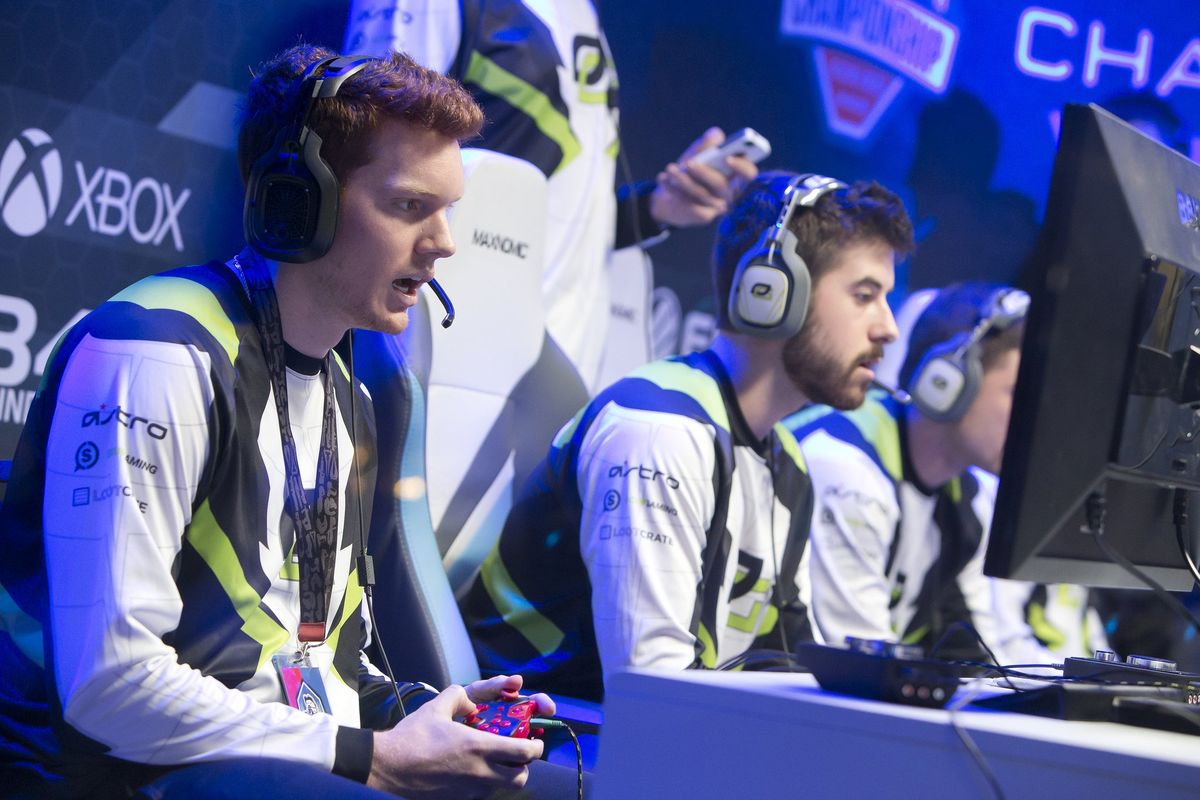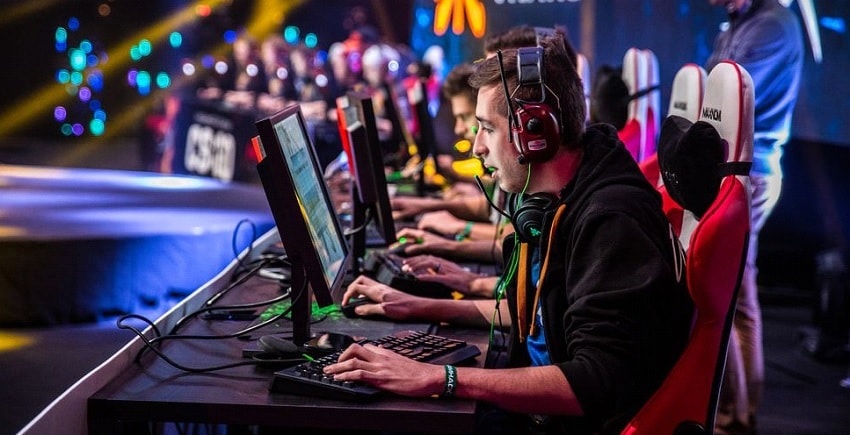The digital landscape has undergone a dramatic transformation in the past few decades, evolving from simple recreational pastimes into a multi-billion dollar, globally recognized industry, and at the heart of this revolution lies esports.
Once viewed merely as children playing video games in their parents’ basements, competitive gaming has ascended to a level of professionalism and spectacle that rivals traditional athletic competitions, complete with packed arenas, massive prize pools, and dedicated fan bases numbering in the millions worldwide.
This phenomenon, which is essentially organized, professional video game competition, has cultivated a fascinating ecosystem where strategic brilliance, lightning-fast reflexes, and intense team coordination are prized assets, turning skilled gamers into international celebrities.
The sheer scale of modern esports, with its structured leagues, sophisticated broadcasting capabilities, and integration into the broader entertainment and technology sectors, makes it one of the most compelling cultural movements of the 21st century.
It’s more than just a game; it’s a new frontier in sports and entertainment, demanding a level of dedication and rigorous training that would surprise any casual observer.
The journey from a niche hobby to a major global spectacle showcases a profound shift in how we define competition and athletic skill in the modern digital age.
What Exactly is Esports?

Esports, a succinct term for electronic sports, is a form of competition using video games.
It involves professional players or teams battling each other in structured tournaments and leagues.
This differs significantly from casual gaming because it is organized, follows strict rules, and is played for spectators and substantial prizes.
Just like traditional sports, professional esports requires immense skill, practice, strategy, and teamwork to succeed at the highest levels.
The games themselves vary widely, covering several genres, each with its own unique competitive scene.
Many consider esports a mind sport, emphasizing cognitive skills over physical exertion, akin to chess or bridge.
A Journey Through Esports History
The concept of competitive video gaming is not a new one, tracing its roots back over fifty years.
The very first recorded video game competition was the “Intergalactic Spacewar Olympics” held at Stanford University in 1972.
The prize for this early event was simply a one-year subscription to Rolling Stone magazine.
A major milestone occurred in 1980 when Atari hosted the Space Invaders Championship, attracting over 10,000 participants and demonstrating the mass appeal of competitive gaming.
The rise of the internet in the 1990s revolutionized the scene, allowing players to compete globally with greater ease.
Games like Quake and StarCraft became early flag bearers for online competitive play, fostering dedicated communities.
The turn of the millennium saw the establishment of major leagues and tournaments, such as the Cyberathlete Professional League (CPL) and Major League Gaming (MLG) in North America.
The launch of Twitch in 2011 completely transformed the landscape, making live-streaming of tournaments easily accessible to millions of viewers and fueling explosive growth.
Today, the industry is a global powerhouse, with events hosted in massive stadiums and prize pools reaching tens of millions of dollars.
The history of esports is a testament to the enduring human desire for competition, now simply channeled through digital means.
The Esports Ecosystem: Key Players
A thriving esports scene relies on a complex network of different actors and organizations working in concert.
A. Game Publishers/Developers
These are the companies that create and maintain the video games used in competition.
They often own the intellectual property and play a crucial role in setting tournament rules and organizing official leagues.
Without the games themselves, there would be no esports, making their involvement fundamental.
B. Professional Teams and Organizations
Teams are the companies that employ the players and handle all the business aspects.
They secure sponsorships, manage branding, and provide resources like training facilities and support staff.
The organizations act much like traditional sports clubs, managing rosters and competing across various titles.
C. Players (Esports Athletes)
These are the stars of the show, the highly skilled individuals who compete.
They dedicate thousands of hours to practice, strategy development, and physical training.
Professional players earn salaries, often bolstered by winnings, sponsorships, and streaming revenue.
D. Tournament Organizers (TOs)
These entities are responsible for running the actual competitions.
They handle everything from securing venues and managing broadcasting to enforcing rules and distributing prize money.
Examples include ESL, DreamHack, and the major league operators created by the publishers themselves.
E. Fans and Spectators
The massive global audience is the lifeblood of the entire industry.
They watch streams, buy merchandise, attend live events, and generate the viewership that attracts sponsors and advertising revenue.
Their passion and engagement are what sustain the ecosystem financially and culturally.
Popular Esports Game Genres

Esports spans a diverse range of video game genres, each demanding a distinct set of skills and strategies.
A. Multiplayer Online Battle Arenas (MOBAs)
These games involve two teams of players battling on a set map, aiming to destroy the opposing team’s main base or “Nexus.”
Each player controls a powerful character with unique abilities, making teamwork and strategy vital.
Titles like League of Legends and Dota 2 are the undisputed kings of the MOBA esports world.
B. First-Person Shooters (FPS)
FPS games place players in a first-person perspective where the core objective is to eliminate opponents using firearms and tactical equipment.
Success in this genre relies heavily on exceptional aiming precision, rapid reflexes, and deep map knowledge.
Highly popular FPS esports include Counter-Strike 2, Valorant, and Call of Duty.
C. Real-Time Strategy (RTS)
RTS games challenge players to manage resources, build bases, and command armies simultaneously to defeat their opponent.
These titles are famously complex, demanding a high level of multitasking, long-term strategic planning, and fast decision-making.
StarCraft II is the most famous and enduring example of a high-level RTS esport.
D. Fighting Games
This genre involves one-on-one combat between characters in an arena setting.
The competitive scene is often referred to as the “FGC” (Fighting Game Community) and places a huge emphasis on execution, pattern recognition, and psychological mind games.
Popular titles include Street Fighter and Super Smash Bros.
E. Battle Royale
Battle Royale games drop a large number of players onto a single map, where the goal is to be the last player or team standing as the play area shrinks.
These titles blend survival, looting, and fast-paced combat, appealing to both players and spectators.
Fortnite and PUBG: Battlegrounds are two of the most significant contenders in this genre.
How Professional Esports Competitions Work
Professional esports tournaments are meticulously planned spectacles, often following formats familiar to traditional sports fans.
A. League and Tournament Structures
Most top-tier games utilize structured leagues that run for months, similar to a regular sports season.
These leagues typically culminate in a major playoff or World Championship event.
Formats range from single-elimination brackets, where one loss means you’re out, to round-robin systems, where every team plays every other team.
B. The Venue and Setup
While many matches are played online, major finals and championship games are held at large, impressive venues like convention centers or sports arenas.
The setups are highly technical, ensuring zero lag for players and high-quality, professional broadcasting for the audience.
Players compete on stage, often enclosed in soundproof booths to minimize distractions and maintain fair play.
C. The Broadcast Experience
The viewing experience is central to esports’ popularity, featuring multiple camera angles and professional commentary provided by “casters” or “shoutcasters.”
These commentators break down the fast-paced action, explain complex strategies, and build excitement for the viewers.
Live statistics, player interviews, and instant replays are all integral parts of the polished broadcast.
D. Prize Pools and Earnings
The financial stakes are extremely high, with top-tier tournament prize pools often reaching millions of dollars.
Winning teams and players split the prize money, which, combined with their salaries and sponsorships, allows top professionals to earn significant incomes.
This financial incentive drives the extreme level of competition seen at the elite level.
The Path to an Esports Career
The world of esports offers a surprising variety of career paths beyond just being a professional player.
A. Professional Gamer
This is the most visible and sought-after role, requiring prodigious skill and dedication.
Pros must train daily, analyze their gameplay, and maintain peak physical and mental conditioning.
They typically start in amateur leagues and must be scouted by a professional organization to move up.
B. Coaching and Analysis
Just like traditional teams, esports organizations hire coaches to guide team strategy and player development.
Analysts are experts who review game footage and opponent strategies to find competitive advantages.
These roles require a deep, nuanced understanding of the game and excellent communication skills.
C. Shoutcasting and Broadcasting
Commentators (casters) provide the dynamic, engaging play-by-play and color commentary for broadcasts.
This pathway requires public speaking talent, a vast game knowledge, and the ability to think quickly under pressure.
The broadcasting side also includes producers, directors, camera operators, and video editors who create the final product.
D. Management and Operations
Teams and leagues require business-minded professionals to manage the organization.
Roles include team managers, marketing specialists, sponsorship directors, and event coordinators.
These positions ensure the financial stability and logistical smooth running of the professional ecosystem.
E. Content Creation and Streaming
Many successful gamers carve out a career by creating engaging video content or live-streaming their gameplay.
Platforms like Twitch and YouTube allow creators to build a personal brand and monetize their following through subscriptions, donations, and advertisements.
This path focuses more on entertainment and community building than purely competition.
The Global Phenomenon of Esports
Esports is a truly global movement, transcending borders and language barriers to connect millions.
It is incredibly popular in Asian countries, particularly South Korea and China, where competitive gaming has long held a prominent cultural position.
North America and Europe have also seen massive growth, with major organizations and events now commonplace.
The industry’s global reach is its defining characteristic, fostering international competition and cultural exchange.
Viewership often rivals that of major physical sporting events, particularly among younger demographics.
This worldwide appeal continues to attract major non-endemic brands like Coca-Cola and Red Bull as sponsors.
The Future Trajectory of Competitive Gaming
The future for competitive gaming looks incredibly bright, with continued growth and mainstream acceptance on the horizon.
The integration of esports into multi-sport events, like its debut as a medal event in the Asian Games, signals growing recognition from traditional sports bodies.
We are likely to see more educational institutions offering scholarships and degree programs related to esports.
The industry is continuously professionalizing, with more focus on player welfare, standardized contracts, and stable competitive structures.
Technological advancements, particularly in virtual reality and mobile gaming, will continue to introduce new competitive genres and platforms.
The transition to a multi-generational fan base means the cultural impact of esports will only deepen over time.
Conclusion
Esports represents a thrilling and dynamic convergence of technology, competition, and entertainment.
It has definitively evolved beyond a simple niche hobby into a powerful global industry.
The professional level demands extraordinary skill, unwavering dedication, and complex strategic thinking from its athletes.
The ecosystem supports a surprisingly diverse array of careers, extending far beyond the role of the professional player.
From its humble beginnings in a 1972 university laboratory, the scene has grown exponentially in complexity and financial scale.
The massive global viewership and corporate investment underscore its profound and lasting cultural impact.
As technology continues its rapid advancement, the world of competitive gaming will undoubtedly continue to surprise and innovate.
It is an evolving landscape that is continually redefining the boundaries of sports and digital entertainment.
The thrilling battles and compelling narratives will captivate audiences for many years to come.







